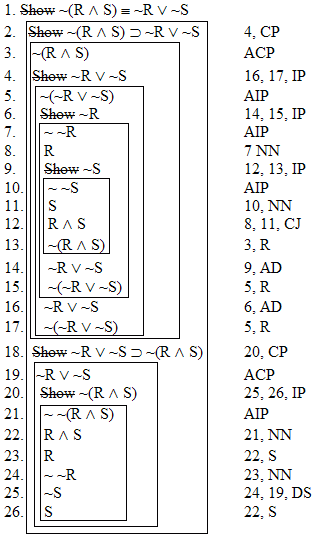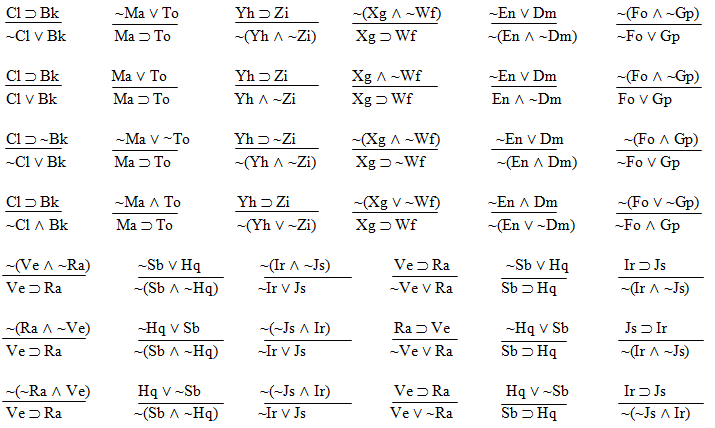3. ~(P ^ Q)
4. ~(P v Q)
| Theorems 5 & 6 (De Morgan's Laws) 3. ~(P ^ Q) 4. ~(P v Q) |

| Rule 18: De Morgan's Laws (DML) Comes in four little rules. 1. If "~(R ^ S)" is an available line, then "~R v ~S" may be written as a new line in the derivation, and 2. If "~(R v S)" is an available line, then "~R ^ ~S" may be written as a new line in the derivation, and 3. If "~R v ~S" is an available line, then "~(R ^ S)" may be written as a new line in the derivation, and 4. If "~R ^ ~S" is an available line, then "~(R v S)" may be written as a new line in the derivation. |

|
|

